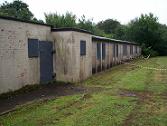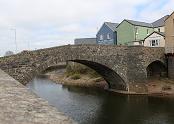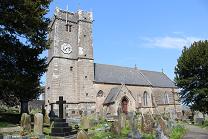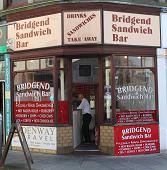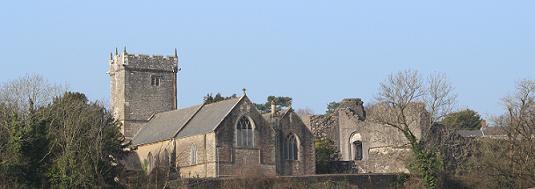 Bridgend
the town by the river
Bridgend
the town by the river
The HMS Urge
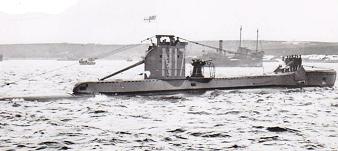 A British submarine the HMS Urge that was funded by the people of Bridgend
during World War Two may have been found 73 years after it sunk.
The HMS Urge left Malta for Alexandria on the north coast of Egypt on 27
April 1942, and was never seen again.
A British submarine the HMS Urge that was funded by the people of Bridgend
during World War Two may have been found 73 years after it sunk.
The HMS Urge left Malta for Alexandria on the north coast of Egypt on 27
April 1942, and was never seen again.
However, the historian Jean-Pierre Misson claims he has identified the
submarine from the sonar recordings he has taken off Ras al Helal, Libya.
The U class submarine is lying at a depth of around 150ft.
His research work will shortly be available for the general public to view
at the Local and Family History Centre at Ty'r Ardd, Bridgend.

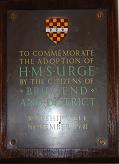
On view in the Old library council office in
Wyndham street
No definite explanation has ever been agreed upon for HMS Urge’s sinking
even when it was officially reported missing in the Mediterranean Sea on
April 29, 1942.
In 1941 there was a national drive to raise money to meet the escalating
cost of providing the British military with machinery and vehicles for the
war, it was called "warship week",
The total amount that was raised Nationally was £955m, and Bridgend
contributed around £300,000 and that would be the equivalent of more than
£12m in today's money. It was at that time the town of Bridgend adopted the
submarine HMS Urge and two warships, The second was a corvette H.M.S. Mallow
(K81), and the other was the Torpedo boat H.M.M.T.B. 47.
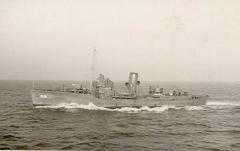
Corvette H.M.S Mallow
HMS Urge
played a vital role in winning the battle for North Africa during the
second World War. The submarine aided the Malta Squadron, known as the
fighting 10th, to cut off vital supplies to Rommel's Afrika Corps.
In 2011 to mark the 69th anniversary of the disappearance of HMS Urge a
plaque honouring HMS Urge and its 29-strong crew and 10 passengers was
rededicated to the people of Bridgend in recognition of their efforts.

The Urge N17 U class Submarine
The Urge was built by Vickers Armstrong
Barrow-in-Furness, U.K. She
was ordered on the 4th of September 1939
and the keel laid down on the 30 of October 1939 and
just 10 months later she was launched on the 19th of August 1940 and
commissioned on the 12th of December 1940.
HMS Urge Lt.Cdr. Edward Philip Tomkinson.
DSO and Bar, RN.
On the 11 December 1940 the HMS Urge under the command of Lt. E.P. Tomkinson,
RN departed the builders yards at Barrow for Holy Loch to begin a period of
trials and training where she arrived the following day. After only 21 days
she departed for Dundee arriving on the 7th January 1941, from here she went
on to Scapa Flow, escorted by HMS Thirlmere captained by T/S.Lt.
R.C.R. Mortimore, RNVR.
From here she departed for her 1st war patrol, off the South-West coast of
Norway to patrol of Stadtlanded and Utvaer. This and her 2nd war patrol,
off Fro-Havet, Norway, were uneventful. Then on the 14 April 1941 after some
movement between port the
HMS Urge departed Portsmouth for Gibraltar. She was to proceed to Malta to
join the 1st submarine flotilla. On her journey to Gibraltar on the 18th of
April torpedoed and sank the Italian tanker Franco Martelli 10535 GRT, built
1939, in the Bay of Biscay,
she Fired two torpedoes from 1500 yards. The second
torpedo hit in the engine room. The ship then stopped but did not sink
another torpedo was then fired that hit under the bridge. Just 30
minutes later the tanker was seen to sink. Of the 34 crew 33 survived.
The Franco Martelli was a blockade breaker and en-route from Recife,
Brasil to Bordeaux, France.

14 May 1941 the HMS Urge departed Malta for her 3rd and 4th war patrol the
in the Mediterranean. She was ordered to patrol off the Tunisia and
Lampedusa Island. On her 5th war patrol she was ordered to patrol South of
the Straits of Messina. Also carrying a raiding party that was to be landed
on the East coast of Sicily to wreck a train in a tunnel if the opportunity
arose. On the 27 June 1941 HMS Urge landed the raiding party Lt.
R. Wilson, R.A. and Marine W.G. Hughes off Taormina, Sicily, Italy. A train
was seen approaching the tunnel where the charge had been placed and shortly
afterwards a brilliant flash was seen as the engine set off the charge.
The operation was successful.
Whilst on her 9th patrol on 27 Aug 1941 the HMS Urge with Lt. E.P. Tomkinson,
RN in command, she torpedoed and damaged the Italian passenger ship
Aquitania, about 10 nautical miles North of Marettimo Island. In the same
attack the torpedoes that were fired at Italian tanker the Pozarica all
traveled to the stern of the ship missing it's target.
She fired four torpedoes against a merchant vessel of about 6000 tons.
Range was 4500 yards. This ship was the leading ship of the nearest column.
The leading ship of the rear column was in the line of fire as well and was
a tanker of about 5000 tons.
The torpedo in
no.3 tube, which fired last, only went half way out of the tube and
the submarine ran in that position. As a result Urge broached while
displaying an 'angry' smoking torpedo in the tube. Fortunately the torpedo
left the tube when HMS Urge got level after surfacing. The Urge then dived
once more at a steep angle while the nearest escort came rushing towards
them from 3000 yards. Three torpedo explosions were heard thought to be one
hit on the merchant vessel Aquitania, and two on the tanker. A depth charge
attack now followed in which 20 depth charges were dropped but the Urge
withdrew to the North-West.
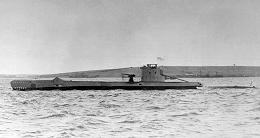
The HMS Urge
During the night of 24 to 25 September an agent was landed near
Cape Gall. The agent was a Frenchman and carried a radio transmitter and the
sum of 100000 lires. He hid the transmitter and the money then went to Palermo
but was almost immediately spotted and taken under surveillance by the secret police
who
watched him for six days. As he returned to his cache he was caught. He
collaborated with the Abwehr. Two torpedo
boats the Dezza and Cascino were sent to intercept the Urge as she came to
pick up the agent but she quietly slipped away from the scene, the trap almost
succeeded.
On the
3 Oct 1941
about 12 nautical miles West of Ustica Island, Italy. The Urge spotted an
object bearing 260° about 5 nautical miles away. It was the German submarine U-331.
The Urge started the attack from a range of 1300 yards fired a salvo of four
torpedoes at the submarine which was thought to be an Italian Gemma-class
submarine proceeding on the surface, three lookouts were seen on her conning
tower and they had sighted one torpedo track. One of the torpedoes fired had
a gyro failure and passed down Urge's Port side. Urge
then surfaced for gun action but when she did the enemy turned away and
dived. A heavy explosion occurred near Urge, this was the torpedo
with the gyro failure exploding at the end of its run.
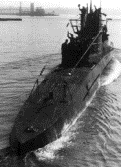
The U-331 German Submarine
18 Oct 1941 saw the departure of HMS Urge from Malta
for her 12th war patrol the 10th in the Mediterranean. She was ordered to
patrol off the East coast of Tunisia between Kuriat and Lampion Island. On
the 22nd she attacked the small Italian merchant Falco near Kuriat but
caused no damage, the ship had an escort that depth charged the Urge without
causing any damage.
Later HMS Urge went on to torpedoe and further damaged the Italian
merchant Ship
Marigola off Kuriat, Tunisia. The Marigola was already grounded after
being torpedoed by aircraft.
On the 4 Dec the Urge saw action again when she torpedoed and damaged the
Italian battleship Vittorio Veneto about 10 nautical
miles west-south-west of Capo dell'Armi.
On the 16th of Feb 1942 HMS Urge landed one of the three
agents she had to land near Tunis, Tunisia. The landing of the other
two agents had to be abandoned due to the worsening
weather. Capt. Wilson took one of the three agents in the
Folbot there was a slight swell that made this a difficult task. When
Capt Wilson returned the Folbot was half full of water and had to be
abandoned when it broke while being hoisted aboard. Due to the
weather the landing of the other two agents had to be abandoned
for the night in the hope of calmer weather the next night. The Urge
withdrew to the centre of the Gulf to lay low till the following day.
The following evening another attempt was made to land the remaining
two agents but had to be aborted, with the weather becoming even
worse it became impossible to land the other two remaining agents. The HMS
Urge remaind in the Gulf of Tunis to ride out the gale on the surface before
setting a course for North, Sicily.
During one of
the boat's clandestine missions which might have been the one mentioned
above a Bridgend man Sub Lt Lloyd was put
ashore, but was betrayed and shot.
During the night of 29 / 30 March 1942 HMS Urge landed a raiding party to wreck a train.
They had successfully placed their charge under the railway line and
returned to the Urge then just before 0100 hours an electric train hit the
charge, the engine exploded and came falling down the embankment. An enemy ship was sighted shortly afterwards and attacked with
the Urge with three torpedoes that all missed. A gun action followed in which three hits
were obtained on the enemy ship. But as the enemy drew nearer the action had
to be broken off and the Urge dived and cleared the area.
On the 1 April the HMS Urge spotted the Italian light cruiser Giovanni delle
Bande Nere 11 nautical miles south-east of Stromboli, Italy. The cruiser was
torpedoed and sank.
The HMS Urge had sailed in the early hours of 27 April from Malta and at a speed of
90 miles per day according to her orders, her route was straight to
Alexandria, and the captain had no compelling reason to be at Ras El Hilal
on 29 April, but
it has been claimed that the HMS Urge submarine had been sunk
with all hands, a crew of 29 and 10 passengers, the war reporter Bernard
Grey was amongst them, by seven Italian CR.42
fighter planes from 153^Squadriglia off Ras El Hilal, Libya on the morning
of 29 April.
It is reported that the wreck of the HMS Urge has been found
off Ras al Helal, Lybia. If this is confirmed then it matches the attack by
seven Italian CR.42 fighter planes from 153 Squadriglia on 29 April 1942,
but why was she there?.
HMS Tudor another Bridgend Adoption
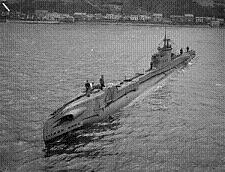
HMS Tudor
was a British submarine of the third
group of the T class. She was built as P326 at Devonport
Dockyard, launched on 23 September 1942 and the second submarine to adopted
by Bridgend. So far she has been the only ship
of the Royal Navy to bear the name Tudor, after the Tudor
period dynasty.
HMS Tudor served in the Far East for much of her
wartime career, where she sank five Japanese sailing vessels, four Japanese
coasters, and another Japanese vessel, as well as an unidentified sailing
vessel north of Sumatra. During the War HMS Tudor was adopted by the
Borough of Bridgend as part of Warship Week. The plaque from this
adoption is held by the National Museum of the Royal Navy in Portsmouth.
She survived the war and continued in service with the Navy, finally being
sold to be broken up for scrap on 1 July 1963 and scrapped at Faslane.
A list of the Crew lost when the
HMS Urge went down
The HMS Tudor NOW has it's own page
Porthcawl Museum
In the old Police Station
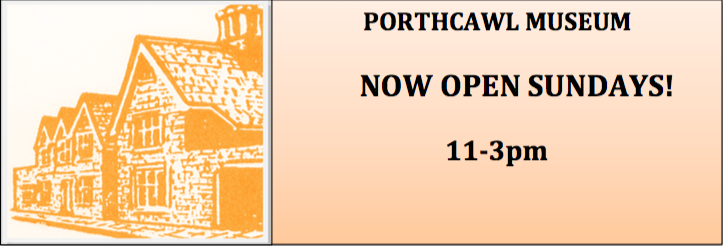
Advertisements

42 Dunraven Place, Bridgend
Contact: Mike 07840 287 383
web site here
Share with your friends on Facebook or Twitter. Just Click the link below.
 Facebook
Facebook
 Twitter
Twitter
Return to Main
Bridgend History Page
Copyright BridgendPPF.com 2017



 Bridgend
the town by the river
Bridgend
the town by the river 














